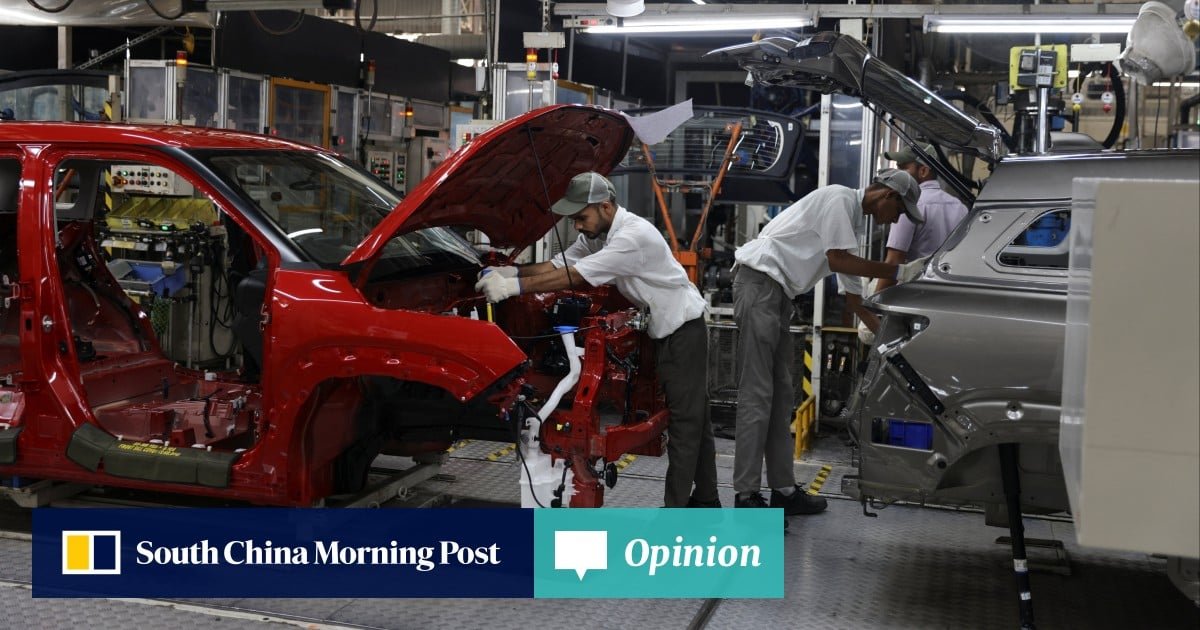Several weeks into the final quarter of 2023 and Asian investors are starting to reflect on a year in markets that looks very different from the lofty expectations many had back in January.
The hope was that the rapid lifting of China’s zero-Covid policy would unleash animal spirits across the domestic economy, potentially driving a rally in global growth as revenge spending and investing would lift risk assets across stocks, real estate and even commodities. However, these hopes were quickly dashed as consumer spending flatlined and the property market continued to contract.
The latest GDP figures for China show an annualised growth rate of 4.9 per cent in the third quarter, an improvement from the near-deflationary conditions seen over the summer. Investors both domestically and globally remain on edge over China’s economic recovery.
As the investing spotlight has drifted away from China, global investors have turned to alternative Asian growth stories. The investing theses for Japan and India, two popular alternatives, could not be more different.
In Asia, the Japanese equity market has seen the highest foreign portfolio investment flows so far this year (US$29.2 billion as of October 13), followed by India (US$14 billion as of October 17), according to Bloomberg data. Latest figures for China show it had US$6.8 billion in net foreign flows as of June 30.

02:39
China’s economy sees a resurgence in the third quarter, beating forecasts
China’s economy sees a resurgence in the third quarter, beating forecasts
Investor interest in Japanese equities has been relatively consistent throughout the year as the investment case has solidified. With big markets such as the US and Europe facing economic uncertainty and potential recession, Japan has seen consumer spending rise with a wave of tourist arrivals.
Inflation and wages have picked up this year, and there is excitement that long-standing productivity and capital-efficiency concerns will be addressed through new listing rules at the Tokyo Stock Exchange.
Despite the demographic decline in Japan in the past few decades, the economy has been able to grow through efficiency and productivity gains, coupled with overseas investment and trade. Japanese conglomerates are eyeing significant capital and infrastructure investment opportunities across Asia, including in China, Indonesia, India and Vietnam.
The Japanese yen remains weak against the US dollar and Japanese government bond yields are still very low compared with global peers. Any changes to Japan’s ultra-loose monetary policy aren’t expected until after the spring wage-growth negotiations. A shift away from the current yield curve control policy would lead to an appreciation in the currency, which could attract further interest from global investors.
Investors are also looking for improved corporate earnings among Japanese corporations this quarter, especially from those with large global operations that will benefit from the weak yen.
Talk of ‘Indian century’ is a dangerous myth masking real issues
Talk of ‘Indian century’ is a dangerous myth masking real issues
Meanwhile, on the other side of Asia, India has captured investor interest for completely different reasons. As it overtook China to become the world’s most populous nation this year, optimism around the economy has surged, with many investors buying into the narrative that India will take the baton from China as the world’s fastest-growing large economy in the coming decades.
India’s opportunity to generate longer-term growth comes primarily from its attractive demographics. Although its total fertility rate has already dropped to 2 births per woman, which is below replacement level, the current median age of 28 means the country can expect to have double China’s population by the end of the century.
There are reasons to believe in the demographic dividend. A large, youthful population brings with it the potential for greater productivity and acceleration in economic growth.
The rapid ascent of many East Asian economies coincided with a rapid rise in their working-age populations. Japan, Singapore and Hong Kong entered this phase in the 1960s and grew rapidly to become developed economies. China’s economic reforms, along with favourable demographics in the 1980s, set the stage for decades of unprecedented growth.

12:50
World’s largest population: why it could be a headache for India
World’s largest population: why it could be a headache for India
How sustainable are the Japan and India investment theses? Both face clear risks. It’s impossible to ignore the many false dawns that Japanese equities have seen since the bursting of the asset bubble in 1991. The biggest risk to the current investment thesis is the end of yield curve control – the tweaks from earlier this year had limited effects on equities or the yen, so an orderly policy exit might be possible, although it would almost certainly take some steam out of the equity rally.
India’s major risk is that the demographic dividend morphs instead into a disaster. Although it has high economic growth, it has thus far failed to create enough jobs. The unemployment rate is around 8 per cent and youth employment is substantially higher, partly because the main pillars of growth are service sector industries.
There is also a skills mismatch, with less than 5 per cent of the country’s young workforce having received formal training. This will make it difficult to expand manufacturing’s share of Indian GDP, a stated policy goal of the government, from around 17 per cent today to 25 per cent. India requires huge, consistent, and targeted investments into underdeveloped and overstretched infrastructure and human capital for decades to come.
Global investors’ love affair with India is about to be tested
Global investors’ love affair with India is about to be tested
Japan and India can claim to be the investor darlings of 2023, but they have also benefited from the negative sentiment around China this year. Global capital that, in earlier years, might have gone to China went instead this year to other Asian destinations which remain core drivers of global growth.
A defining theme of 2024 will be whether these markets can sustain this high level of investor interest even as sentiment turns positive again in China. If so, we could be looking at a new stage of regional development.
David Chao is a global market strategist, Asia Pacific (ex-Japan), at Invesco


